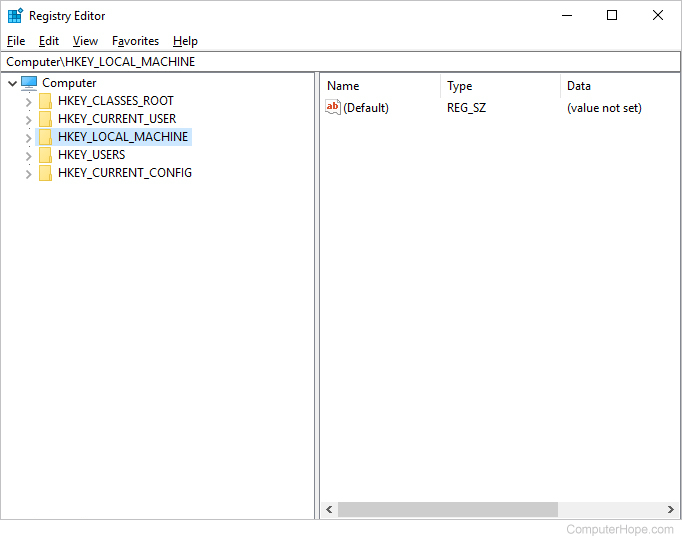Windows 10: Exploring the Full Size of Your Hard Disk Space
If your hard disk is organized into a single partition, determining its complete capacity is a straightforward procedure. In File Explorer, you can right-click the sole local disk (typically labeled as C:) and select “Properties.” This action will swiftly reveal the size of the C drive, which directly represents the total capacity of your hard disk.
Nevertheless, if your hard disk is divided into multiple partitions, assessing the total space becomes more intricate. This task involves individually checking the size of each partition and subsequently summing them up to ascertain the entire hard disk space. Fortunately, there’s no need to undertake this labor-intensive process.
This article serves as your guide to seamlessly uncovering the total hard disk space in Windows 10, 8, and 7. By following our instructions, you can achieve this without relying on any third-party utilities, simplifying the process and enhancing your system knowledge.
1. Checking the Hard Disk’s Total Size
Command Prompt (CMD) is your answer, providing a direct approach to tackle this question. Here’s an all-inclusive manual detailing how to examine your hard drive space using CMD.
- Step 1: Open the Command Prompt by typing “cmd” in the Windows search box and selecting “Command Prompt.”;
- Step 2: Input “wmic diskdrive get size” and hit Enter. This action will display the total hard disk space in bytes.
As a result, my hard drives exhibit sizes of 250,056,737,280 bytes and 1,000,202,273,280 bytes respectively.
For a ballpark estimate in gigabytes (GB), exclude the trailing 9 digits from the string. This reveals that I own a 250 GB and a 1,000 GB disk, aligning accurately with reality. To attain a more exact value, divide this number by 1,073,741,824 (equivalent to 1,024 * 1,024 * 1,024). As a result, my drive measures 232.88 GB. But why not 250 GB? The reasoning unfolds in the upcoming explanation.
2. Verify Total Hard Disk Size using Disk Management
Disk Management, an integral Windows utility for hard drive administration, also facilitates the assessment of your hard disk’s overall capacity.
- Step 1: Initiate the process by right-clicking the My Computer icon on your desktop and opt for “Manage” from the context menu;
- Step 2: This action will open a new window. Within it, navigate to “Disk Management” located under the Storage section in the left panel. Here, you’ll gain insight into the extent of your hard disk’s size on the right panel. Moreover, this tool grants you the ability to inspect the space allocation of each individual hard drive.
3. Examine Total Hard Disk Size using System Information

Within the Windows toolkit lies a valuable asset: System Information. This tool not only offers an in-depth analysis of your system’s particulars but also extends to assessing hard drive space. Let’s explore the process.
| Step | Instructions |
|---|---|
| 1 | Press Windows Key + R to open the Run dialog. Enter “msinfo32” and press Enter. |
| 2 | A new window will appear. In the left panel, find and click the plus sign next to “Components” to expand. |
| 3 | Further expand by clicking the plus sign next to “Storage” within the Components section. Then, choose “Disks.” This will unveil intricate hard disk details on the right panel, allowing comprehensive scrutiny of specifications, including total hard drive size. |
Hard Disk Capacity Discrepancies: Decimal vs. Binary Bytes
The apparent disparity between the advertised total space of your hard disk and the observed capacity, which appears slightly smaller, might leave you perplexed. As an illustration, if your SSD is touted as 250GB, the outcome might register as 233.83GB. This discrepancy finds its roots in the distinct computational methodologies employed by hard drive manufacturers during calculation and advertising, juxtaposed with the actual utilization by computers.
Manufacturers employ decimal bytes, establishing the industry norm for storage space depiction. In this context, 1GB equals 1,000MB equals 1,000,000KB equals 1,000,000,000 bytes. For instance, if a hard drive’s capacity is advertised as 250GB, it comprises 250 * 1000 * 1000 * 1000 = 250,000,000,000 bytes.
However, the computational approach in computers employs binary bytes. Consequently, computers transform byte counts into gigabytes by dividing by 1024, unlike the 1,000 utilized in decimal bytes. Consequently, 250,000,000,000 bytes translates to 250,000,000,000 / (1,024 * 1,024 * 1,024) = 233.83GB. This fundamental difference is responsible for the observed variation in the total hard disk space display.
Conclusion
This article has provided you with a comprehensive understanding of how to effectively check the total hard disk space in Windows 10. By exploring various built-in tools and techniques like Command Prompt, Disk Management, and System Information, you can effortlessly ascertain the complete capacity of your hard drive. Armed with this knowledge, you can confidently manage your storage and make informed decisions about your computer’s resources.


